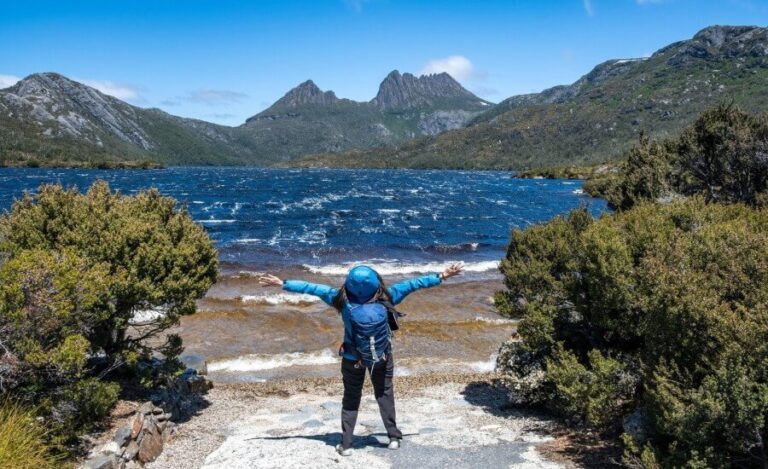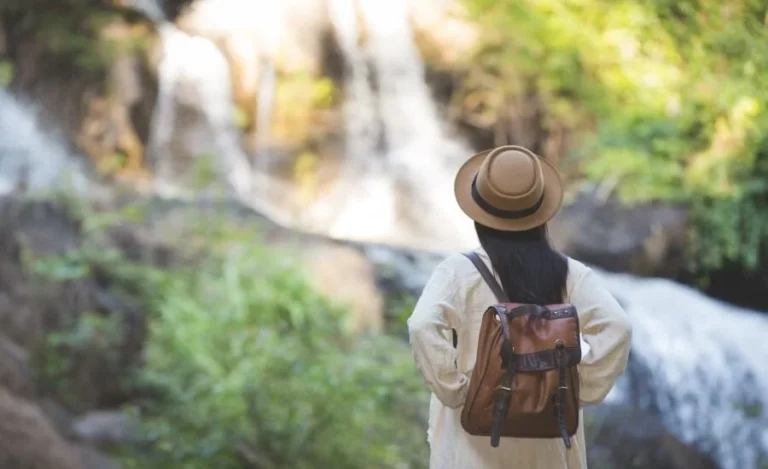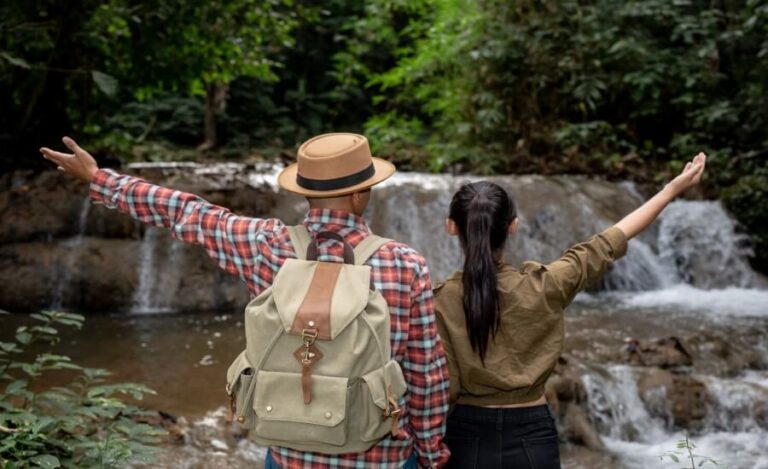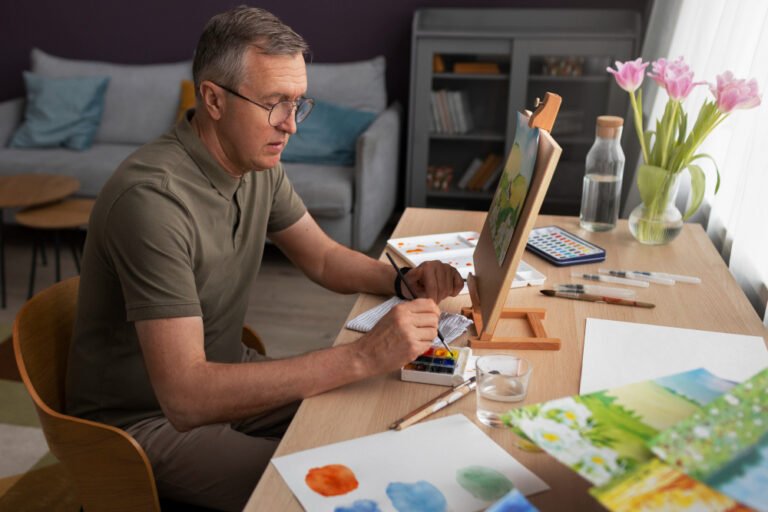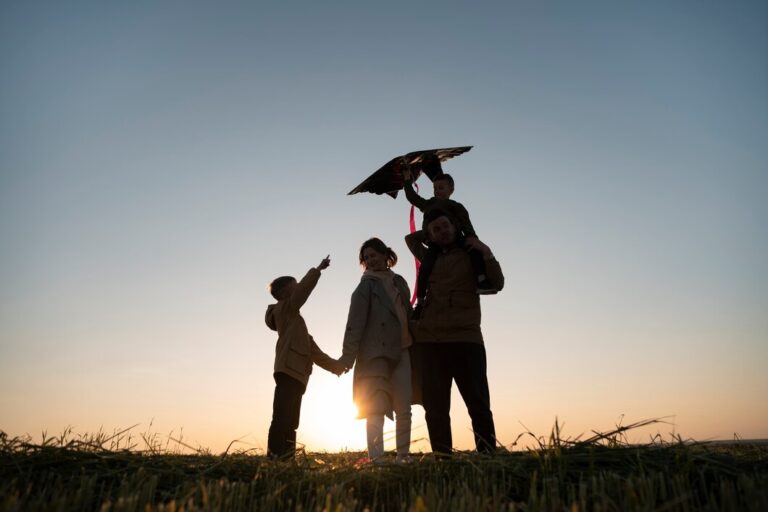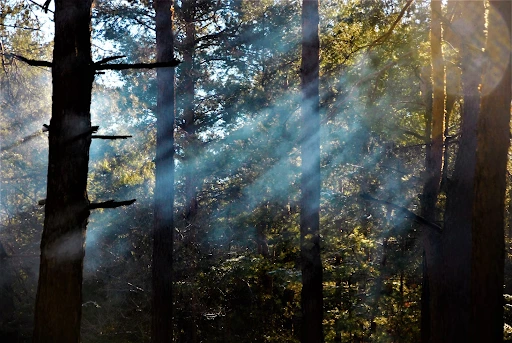
In the quiet stillness a device that isn’t there. But then, something remarkable happens. The world around you begins to reveal itself in high definition – not through a screen, but through your senses awakening from a long digital slumber.
This is the paradox many burnout sufferers discover when they finally step away from their connected lives and into the embrace of nature: disconnecting is actually a profound form of reconnecting – with yourself, with the physical world, and with the present moment.
The Modern Burnout Epidemic and Nature’s Ancient Remedy
Our lives have become increasingly digital, with the average American spending over 7 hours daily on screens. For those suffering from burnout – that state of chronic stress characterized by exhaustion, cynicism, and reduced efficacy – the constant connectivity often exacerbates the problem. We’re perpetually “on,” accessible to work demands, social pressures, and the endless scroll of information.
But long before smartphones and laptops, humans had a powerful antidote to mental and emotional fatigue: immersion in the natural world.
Nature-based travel journeys specifically designed to immerse us in natural environments while mindfully disconnecting from technology – offers a particularly potent form of healing. These experiences combine several therapeutic elements:
- The restorative effects of natural environments
- Physical distance from work stressors
- A break from digital overstimulation
- Opportunities for mindful presence
- The perspective shift that travel inherently provides
When we remove the digital mediators between ourselves and our experiences, we create space for the kind of deep healing that burnout recovery demands.
The Science Behind Nature’s Healing Power
Research consistently demonstrates that nature exposure reduces stress hormones, lowers blood pressure, improves mood, and enhances cognitive function. A landmark study published in the Proceedings of the National Academy of Sciences found that a simple 90-minute walk in a natural setting decreased rumination and neural activity in areas of the brain linked to depression.
What makes nature-based travel particularly effective for burnout recovery? When we combine nature immersion with the novel perspectives that travel provides, we create optimal conditions for what psychologists call “psychological distance” – the mental space needed to gain new perspective on our problems.
Have you ever noticed how solutions often arrive when you’re not actively thinking about a problem? This is the gift that unplugged nature travel offers the burnout sufferer.
Unplugging to Reconnect: The Paradox of Digital Detox Travel
“The first day without my phone was anxiety-inducing,” recalls Maya, a marketing executive who embarked on a tech-free hiking retreat after her doctor warned her about burnout. “By the third day, I couldn’t believe how much more I was seeing, feeling, and experiencing. It was like someone had turned up the volume on life.”
When we disconnect from technology while traveling in nature, several transformative shifts occur:
Sensory Reawakening
Without screens commanding our attention, our senses gradually recalibrate. Colors appear more vivid. The symphony of natural sounds – birds calling, leaves rustling, water flowing – becomes a source of fascination rather than background noise. Food tastes more complex, smells trigger deeper memories, and touch becomes more informative.
This sensory awakening isn’t just pleasurable – it’s therapeutic. Mindfulness researchers have long known that full sensory engagement is one of the most direct paths out of the rumination that characterizes burnout.
Time Dilation
Perhaps one of the most remarkable effects of unplugged nature travel is how it transforms our perception of time. When freed from digital time-keepers and the constant fragmentation of attention that technology creates, time seems to expand. Days feel fuller, longer, more substantial.
This subjective time expansion directly counteracts one of burnout’s most insidious symptoms: the feeling that time is constantly slipping away, that there’s never enough of it, that we’re always behind.
Attention Restoration
According to Attention Restoration Theory, natural environments support the recovery of our directed attention – the finite cognitive resource that burnout rapidly depletes. Unlike urban or digital environments that demand our attention through “hard fascination,” nature engages us through “soft fascination,” allowing our directed attention reserves to replenish.
What does this mean in practice? After several days in nature without technology, many travelers report increased concentration, improved decision-making, and a renewed sense of mental clarity – precisely the cognitive functions that burnout impairs.
Nature-Based Travel: Choosing Your Path to Recovery
The beauty of nature-based travel for burnout recovery lies in its versatility. Depending on your needs, preferences, and burnout severity, various approaches offer different healing benefits:
Forest Bathing Retreats
Originating in Japan as “shinrin-yoku,” forest bathing involves slow, mindful immersion in woodland environments. Guided forest bathing retreats are now available worldwide, offering structured practices for maximizing the therapeutic benefits of forest atmospheres.
Forest environments are particularly rich in mood-enhancing compounds called phytoncides, which trees release into the air. Research shows that inhaling these compounds boosts immune function and reduces stress hormone production.
For burnout recovery, forest bathing offers gentle recalibration without requiring strenuous activity – perfect for those whose burnout manifests primarily as physical exhaustion.
Wilderness Backpacking Journeys
For those seeking more profound disconnection, multi-day wilderness backpacking creates natural boundaries between you and technology. When you’re days from the nearest cell signal, carrying everything you need on your back, priorities clarify with remarkable speed.
The rhythmic simplicity of wilderness travel – wake, walk, eat, sleep, repeat – creates a meditative container for processing burnout-related emotions and insights. Physical exertion releases tension held in the body, while the vastness of wild landscapes helps restore perspective to problems that may have seemed all-consuming.
As one wilderness guide specializing in burnout recovery trips observes: “In the backcountry, people remember who they are beneath all their roles and responsibilities. That remembering is the beginning of healing.”
Slow Travel in Natural Settings
Not every healing journey requires extreme wilderness immersion. Renting a cabin by a lake, staying at a farm retreat, or spending time in a small coastal village can provide similar benefits when approached mindfully.
The key is intentionally structuring your experience to minimize technology and maximize nature connection. This might mean choosing accommodations without WiFi, designating specific (and limited) times for device use, or simply leaving devices behind entirely.
Slow travel – spending extended time in a single location rather than rushing between destinations – naturally encourages the kind of presence that burnout recoverers need most.
The Art of Disconnecting: Practical Strategies for Tech-Free Nature Travel
Disconnecting from technology while traveling isn’t just about willpower – it requires thoughtful preparation and alternative tools. Here’s how to navigate the transition:
Navigation Without GPS
Perhaps the most common concern about traveling without technology is navigation. Yet humans found their way across continents, oceans, and wilderness long before GPS. Reclaiming these skills is both practical and empowering:
- Paper maps and compasses: Learn basic map and compass skills before your trip. The process of orienting yourself physically in space engages spatial cognition in ways GPS cannot.
- Guidebooks: Traditional print guidebooks often contain detailed maps and directions that don’t require battery power or signal.
- Local knowledge: Asking locals for directions creates meaningful interactions and often leads to discoveries no app would suggest.
- Pre-research routes: Before leaving, study your routes carefully and make notes. This preparation becomes part of the journey itself.
Many travelers report that navigation without GPS, while occasionally challenging, creates a deeper connection to landscapes and a more satisfying sense of accomplishment.
Capturing Memories Without Smartphones
The impulse to preserve beautiful experiences is natural. However, our photo-taking habits often pull us out of direct experience and into a documenting mindset. Consider these alternatives:
- Selective photography: If bringing a camera, set specific times for photography rather than constantly documenting. This preserves both battery life and presence.
- Disposable cameras: The limited exposures of disposable cameras naturally encourage selectivity and presence.
- Field journaling: Drawing, even for the artistically uninclined, encourages close observation and creates deeply personal souvenirs.
- Written descriptions: Challenging yourself to capture a scene in words engages different perceptual pathways than visual recording.
- Memory training: Practice the ancient art of memory palace building, creating mental architecture to house your experiences.
The most precious souvenirs from healing travel are rarely the images but the embodied memories – how the place made you feel, what insights emerged, how your senses came alive.
Communication Strategies
Fully disconnecting from communication technology isn’t realistic or necessary for everyone. Consider these balanced approaches:
- Designated check-in times: Rather than constant accessibility, establish specific, limited windows for connectivity.
- Emergency protocols: Share your itinerary with a trusted contact and establish clear emergency communication plans.
- Out-of-office clarity: Set explicit expectations about your unavailability, including how long responses might take upon your return.
- Analog alternatives: Where possible, use in-person conversation, handwritten notes, or other non-digital forms of communication.
Remember that the quality of your recovery directly correlates with your degree of disconnection. Each compromise with constant accessibility potentially diminishes the healing effects of your travel.
Mindful Engagement: Practices for Deepening Nature Connection
Disconnecting from technology creates space, but how we fill that space matters tremendously for burnout recovery. These practices help maximize the healing potential of nature-based travel:
Sensory Treasure Hunts
Dedicate time to systematic sensory exploration:
- Find five things you can see that you find beautiful or interesting
- Notice four distinct sounds in your environment
- Touch three different natural textures and describe them internally
- Identify two natural scents
- If appropriate and safe, taste one thing (like spring water or edible plants with proper knowledge)
This classic mindfulness exercise takes on new dimensions in nature, especially when practiced daily throughout your journey.
Threshold Crossing
Developed by wilderness awareness schools, threshold crossing involves creating a physical threshold (like two stones placed on either side of a trail) that you cross mindfully, leaving behind thoughts of work, responsibilities, and digital life.
Many travelers create morning rituals around threshold crossing, setting intentions for the day’s journey before stepping across.
Council of All Beings
This powerful ecological mindfulness practice involves finding a quiet natural spot and allowing yourself to experience the perspective of another being in that ecosystem – a tree, an animal, a body of water.
What might the world look like through those eyes? What wisdom might that being offer to your human challenges? This practice often generates surprising insights about burnout patterns and potential solutions.
Nature Journaling
Unlike conventional journaling, nature journaling combines written observations, sketches, sensory notes, questions, and personal reflections about your environment. This practice builds the observation muscles that screens often atrophy while creating a rich record of your journey.
No artistic skill is required – only willingness to observe closely and record honestly. Many travelers find that nature journaling naturally evolves into processing burnout-related insights.
Common Concerns & Solutions for Tech-Free Travel
“What if there’s an emergency?”
Solution: Establish emergency protocols before departing. This might include checking in with a designated contact at specified intervals, carrying a basic emergency communication device for true emergencies only (like a satellite messenger), and thoroughly researching safety resources in your destination. Remember that humans managed emergencies for millennia before cellphones.
“I’ll miss important work developments.”
Solution: Proper preparation prevents this concern from undermining your recovery. Set clear boundaries with colleagues, activate comprehensive auto-responses, delegate essential responsibilities, and remember that your restoration directly improves your professional effectiveness upon return. True emergencies should have designated protocols that don’t require your constant availability.
“I use my phone for everything – how will I function?”
Solution: This dependence is precisely what needs disruption for effective burnout recovery. Each assumed necessity has analog alternatives: wristwatches tell time, paper notebooks capture thoughts, physical books provide reading material, and face-to-face conversations replace social media. The initial discomfort of these transitions is part of the healing process, creating space to develop new patterns.
“I’ll feel anxious without my devices.”
Solution: Acknowledge this anxiety as an expected withdrawal symptom rather than a reason to remain connected. Studies show that nomophobia (fear of being without mobile devices) peaks within the first 72 hours, then significantly decreases. Preparation helps: bring grounding tools like essential oils, a journal, or specific mindfulness practices to work through the initial discomfort.
“I won’t be able to share my experiences in real-time.”
Solution: Real-time sharing often diminishes first-hand experience. Consider that the most profound travel experiences throughout history occurred without digital documentation. Delayed sharing upon return often leads to more meaningful curation and reflection. The question becomes: are you traveling for the experience itself or for others’ perception of your experience?
Before You Go: The Tech-Free Travel Preparation Checklist
Essential Preparations:
- Research your destination thoroughly before departure (print relevant information)
- Purchase appropriate physical maps and navigation tools
- Acquire a reliable watch that doesn’t require frequent charging
- Set up comprehensive email auto-responses and work boundaries
- Establish emergency protocols and communication plans with a trusted contact
- Consider a basic digital camera if photography is important (not a smartphone)
- Pack a journal and writing implements for reflection and documentation
- Bring analog entertainment (books, art supplies, musical instruments)
- Learn basic natural navigation skills appropriate to your destination
- Research local flora, fauna, and geological features to enrich your experience
- Prepare for technology withdrawal with mindfulness tools and practices
- Create a physical packing list rather than a digital one
Digital Minimalism Option:
If complete disconnection isn’t possible, create strict protocols:
- Designate a single 15-minute window daily for essential digital communication
- Use “airplane mode” as your default device state
- Remove social media apps and email from devices you bring
- Disable notifications for all remaining applications
- Pre-download any essential documents, confirming they’re accessible offline
- Set expectations with others about your limited availability
- Create physical boundaries (like keeping devices packed away except during designated times)
Returning: Integrating Insights for Lasting Burnout Recovery
While the experience of tech-free nature travel is powerful, its lasting impact depends largely on how you return to daily life. Many travelers report profound shifts during their journeys, only to have insights fade within weeks of resuming normal routines.
To preserve and build upon your nature-based healing:
Create Transition Space
Rather than plunging immediately back into full connectivity, establish a buffer period. Perhaps spend the first day back without resuming social media, or limit email to specific windows before gradually expanding.
Extract Specific Lessons
What specifically helped you feel better in nature? Was it sensory richness, simplified decision-making, physical movement, or connection with others? Identify these elements and brainstorm how to incorporate them into regular life.
Establish Nature Connection Practices
Even in urban environments, regular nature connection remains possible. Commit to specific practices: perhaps a weekly hike, daily time with plants, or regular outdoor meditation. These practices maintain the neurological benefits activated during your travel.
Implement Digital Boundaries
Use your experience of disconnection to establish healthier technology boundaries. This might include:
- Technology-free evenings or mornings
- Social media limits or deletions
- Notification reductions
- Physical separation from devices during certain activities
- Regular digital sabbaticals
Share Selectively
Rather than posting everything at once, consider sharing your experience thoughtfully and intentionally. This might mean in-person storytelling, carefully curated images, or written reflections that honor the depth of your journey.
Schedule Your Next Disconnection
Before being fully reabsorbed into daily life, schedule your next opportunity for nature-based recovery. This might be a weekend rather than a week, but having it calendared creates both anticipation and commitment.
The Deeper Invitation: Healing Beyond Burnout
Nature-based travel without technology offers immediate burnout relief, but its deeper invitation extends beyond symptom management. These journeys often become thresholds to more fundamental life reassessment.
In the spaciousness created by disconnection and natural immersion, essential questions naturally arise:
What’s actually necessary for my wellbeing? Which aspects of my connected life serve me, and which deplete me? What values and priorities became clear in nature that were obscured in daily life? How might I design a life that requires less recovery from burnout?
The most powerful burnout recovery doesn’t just restore you to your previous functioning – it transforms your relationship with work, technology, and time itself. The clarity gained through unplugged nature immersion often catalyzes changes that prevent burnout’s recurrence.
As you contemplate your own healing journey, remember that the most profound technology is not digital but natural – the innate capacity of human nervous systems to recalibrate in natural settings, the ancient intelligence of forests and oceans, the transformative power of direct experience.
Your burnout likely didn’t develop overnight, and neither will your full recovery. But in choosing to step away from screens and into the embrace of the natural world, you’re activating healing processes as old as humanity itself.
The journey awaits. Will you answer its call?
